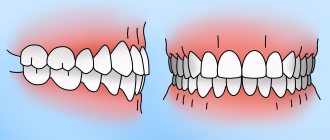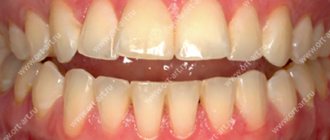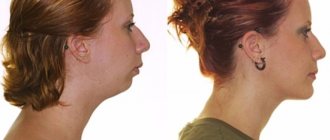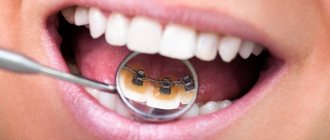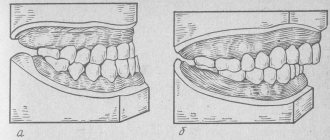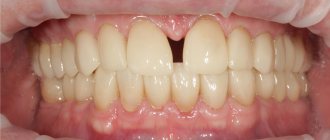Can an orthodontist tell his patient that it is too late for him to start treatment? No!
Although in adolescents and young people many processes are simpler and easier, since tissues are actively renewed, nevertheless, the experience of treating adult patients says: all pathologies can be treated at any age. The main thing is that the teeth are preserved.
It's never too late to get treatment
Several reasons why older patients turn to an orthodontist
“Older age” is a convention here, since adult patients do not have any age gradation. But many doctors note that in recent years they have more and more patients over 35 and even 45 years old. What is this connected with?
- Previously, we could not afford treatment.
For various reasons: lack of time, lack of information about treatment or some kind of prejudice, or it was simply not possible to pay the entire amount at once. Many clinics now offer affordable installment plans to make treatment affordable. And the appointment with the aligners itself lasts up to 10 minutes - once a month it’s not so difficult to find time for it. Therefore, many people who previously only dreamed of correcting their bite can now undergo this treatment, and there are no restrictions for them.
- Previously, they didn’t dare because of braces.
Some people are not suitable for labial braces, even clear sapphire or white ceramic ones, for various reasons. They can interfere with diction, and their metal elements are still noticeable on the teeth. For such people, clear removable aligners are suitable: when the technology became generally available, it made a real breakthrough in orthodontics. Completely invisible and comfortable to wear, aligners have almost no contraindications.
Don't deny yourself the opportunity to have a healthy smile.
- Previously, they did not know that treatment was needed.
And this happens: visually the teeth may be almost straight, but the bite still needs to be corrected. Although the dentist should warn about this during routine treatment of caries. But, nevertheless, sometimes a person only finds out in adulthood that he needs to see an orthodontist. In any case, better late than never, since orthodontic treatment reduces the risks of many dental diseases, including in older people.
After treatment, teeth will perform their functions better, which means it will be easier to maintain their health.
- Prosthetics were required.
This is a fairly common reason. It is related to the previous one: not all patients know that their teeth are not closing properly. And when you need to place crowns or implants, you may find that there is not enough space for them or they cannot be installed at the correct angle. Crowns perform the function of chewing every day; the load on them is quite large. And installing them if the bite is incorrect is risky; an implant or even a regular bridge may not last as long as needed. Then the only option is to correct the position of the teeth, despite the fact that because of this, prosthetics will have to be postponed.
In general, a person over 45 may have more than one reason to see an orthodontist. And, fortunately, now there are all conditions to carry out treatment. For any problem, you can choose a suitable bite correction system; they are all effective and give good results.
The advantage of interacting with adult patients
Most often, children wear braces solely because of the wishes of their parents. Therefore, it can be quite difficult to convince them of the need for careful, daily care and diet. In addition, at this age there are no necessary self-discipline skills, which can cause many problems. As a result, after removing braces, children are diagnosed with extensive carious lesions or other pathologies, which can be quite difficult to correct even for the most experienced specialist.
Adults approach the issue of correcting their bite much more responsibly; they follow all the recommendations of their treating doctor. Most people over 40 are completely financially independent, so they can afford to install the most aesthetically attractive and comfortable structures made of ceramics or sapphire.
Such patients are mentally prepared for the upcoming difficulties and really want to achieve an excellent result. Adults are sincerely grateful to doctors who help them get a perfect smile.
previous post
Pain from braces
next entry
Do you already have fillings or crowns?
Teeth with fillings, if they have healthy roots, can also move during treatment. The main thing is that the fillings are installed well. If they are outdated and do not hold up well, they can be changed before starting treatment. Even teeth with the pulp (nerve) removed can be moved.
The same goes for crowns. When preparing for treatment, you need to make sure that they are not loose and that they are securely fastened. In most cases, they do not interfere, but there are rare exceptions: if it is the tooth with the crown that will bear the main load when moving. Then the possibility of treatment is discussed individually.
Before treatment, you need to take a photo to study the condition of your teeth.
As for implants, their internal part, which is installed in the jaw, cannot move in the same way as the root of a natural tooth. But implants are usually not placed if there are problems with the bite.
The orthodontist will discover all possible contraindications at a preliminary appointment, after examining an image (orthopanorama) of the teeth. Then we can discuss what is the best way to carry out treatment. But you definitely shouldn’t give it up because of age.
Other articles:
- 3D scanning of teeth: what are the advantages of technology
- Temporary and permanent contraindications to orthodontic treatment
Reviews
It is difficult to appreciate the feeling that arises after the procedure of installing braces at the age of 40+. Especially when I couldn’t decide to take this step for many years. Even the pain that tormented me for almost three days after installation did not overshadow the joy of completing my plan. The treatment lasted 2.5 years, but it was worth it. To everyone who is still thinking, make up your mind, you won’t regret it!
Marianna, Taganrog
Fear, doubts in my own abilities, busyness and eternal problems - that’s what prevented me from taking a closer look at my bite. I gained more courage thanks to the abundance of information on the Internet and reviews from people like me. After almost three years of treatment, I did not recognize my teeth: they became perfectly straight.
Tanya, Znamensk
Consequences of pathology
What malocclusion affects depends on the severity and type of deformity. Often pathology has a negative impact on other systems and organs, disrupting their normal functioning.
How does malocclusion affect health and what consequences does it cause:
- diseases of the digestive tract - deformation of the position of the jaws interferes with the quality of chewing food;
- premature wear of tooth enamel;
- high probability of breakage of dentures if they are present and the impossibility of placing them when indicated;
- early wear and tear of the temporomandibular joint and its weakening, which leads to jaw pain and headaches;
- premature appearance of wrinkles, deformation of the normal oval of the face;
- problems with diction, inability to produce intelligible speech.
Prices for bite correction
Orthodontic correction using a brace system.
Indirect fixation of one jaw. 5,000 rub.
Orthodontic correction using a brace system. Inspection and activation of the bracket system.
3,000 rub.
Orthodontic correction using a brace system. Re-fixation of the 1st bracket.
1,500 rub.
Orthodontic correction using a brace system. Fixation of the 1st bracket.
2,000 rub.
Orthodontic correction using braces on two jaws, 1st degree of complexity
103,000 rub.
Orthodontic correction using braces on two jaws, 1st degree of complexity, initial stage
50,000 rub.
Orthodontic correction using braces on two jaws, 1st degree of complexity, final stage
15,000 rub.
Orthodontic correction using braces on two jaws, 1st degree of complexity, scheduled visits
35,000 rub.
Orthodontic correction using braces on two jaws, 2nd degree of complexity
118,000 rub.
Orthodontic correction using braces on two jaws, 2nd degree of complexity, initial stage
50,000 rub.
Orthodontic correction using braces on two jaws, 2nd degree of complexity, final stage
15,000 rub.
Orthodontic correction using braces on two jaws, 2nd degree of complexity, scheduled visits
51,000 rub.
Orthodontic correction using braces on two jaws, 3rd degree of complexity
133,000 rub.
Orthodontic correction using braces on two jaws, 3rd degree of complexity, initial stage
50,000 rub.
Orthodontic correction using braces on two jaws, 3rd degree of complexity, final stage
15,000 rub.
Orthodontic correction using braces on two jaws, 3rd degree of complexity, scheduled visits
67,000 rub.
Orthodontic correction using braces on two jaws, 4th degree of complexity
147,000 rub.
Orthodontic correction using braces on two jaws, 4th degree of complexity, initial stage
50,000 rub.
Orthodontic correction using braces on two jaws, 4th degree of complexity, final stage
15,000 rub.
Orthodontic correction using braces on two jaws, 4th degree of complexity, scheduled visits
83,000 rub.
Orthodontic correction using braces on one jaw, 1st degree of complexity
48,000 rub.
Orthodontic correction using braces on one jaw, 1st degree of complexity, initial stage
25,000 rub.
Orthodontic correction using braces on one jaw, 1st degree of complexity, final stage
7,500 rub.
Orthodontic correction using braces on one jaw, 1st degree of complexity, scheduled visits
17,500 rub.
Orthodontic correction using braces on one jaw, 2nd degree of complexity
59,000 rub.
Orthodontic correction using braces on one jaw, 2nd degree of complexity, initial stage
25,000 rub.
Orthodontic correction using braces on one jaw, 2nd degree of complexity, final stage
7,500 rub.
Orthodontic correction using braces on one jaw, 2nd degree of complexity, scheduled visits
RUB 25,500
Orthodontic correction using braces on one jaw, 3rd degree of complexity
64,000 rub.
Orthodontic correction using braces on one jaw, 3rd degree of complexity, initial stage
25,000 rub.
Orthodontic correction using braces on one jaw, 3rd degree of complexity, final stage
7,500 rub.
Orthodontic correction using braces on one jaw, 3rd degree of complexity, scheduled visits
RUB 30,500
Orthodontic correction using braces on one jaw, 4th degree of complexity
74,000 rub.
Orthodontic correction using braces on one jaw, 4th degree of complexity, initial stage
25,000 rub.
Orthodontic correction using braces on one jaw, 4th degree of complexity, final stage
7,500 rub.
Orthodontic correction using braces on one jaw, 4th degree of complexity, scheduled visits
RUB 41,500
Orthodontic correction using braces. Treatment with partial braces.
20,000 rub.
Is it always possible to correct an overbite?
Bite defects can be eliminated in almost any case. Orthodontic treatment eliminates not only cosmetic defects, but also allows you to maintain healthy teeth and normal functioning of the maxillofacial apparatus.
Elimination of pathology significantly improves dental hygiene and facilitates dental procedures. To find out how much it costs to correct a bite in adults, visit an orthodontist: the doctor will conduct an initial examination, give recommendations for straightening teeth and give an estimate on the cost of treatment.
Which braces to choose
As you can see, there are a lot of braces. True, you will need to choose between them not on your own, but together with the doctor, since the choice depends not only on the wishes of the patient, but also on the condition of the dental system. For example, quite often a patient would like to have aesthetic braces, but only metal braces can cope with his anomaly.
If you have a choice, then it is best to put:
- Metal braces, if there are no special requirements for aesthetics and there is a desire to save money.
- Ceramic, if you want not to spend too much on treatment, but at the same time maintain aesthetics.
- Sapphire, if there is a desire on the contrary, draw attention to your teeth and decorate them with “jewels”.
- Combined braces, if you are willing to sacrifice a little aesthetics for the sake of saving.
- Lingual, if you need maximum aesthetics.
Judging by the reviews, metal braces are still the most popular among adults, and many people are now calmly undergoing treatment with such structures, without facing the condemnation of others. Of the aesthetic designs, ceramic braces are the most popular, as they are quite inconspicuous, but not too expensive.


